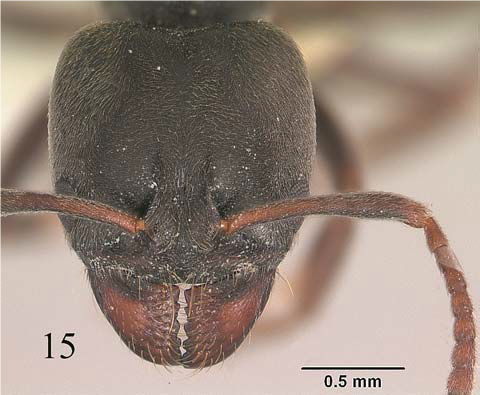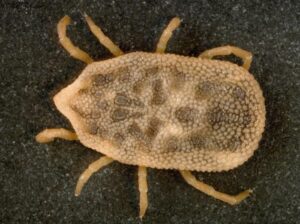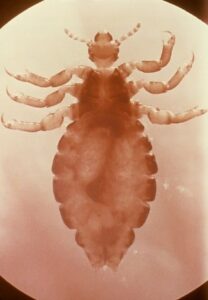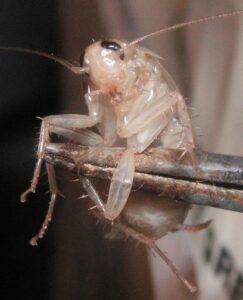Odorous House Ant or Stink Ant
General Description
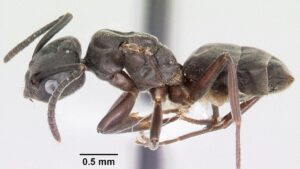 |
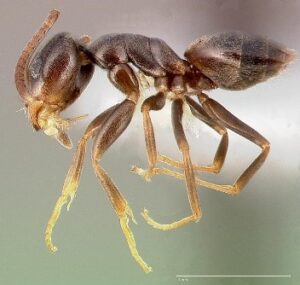 |
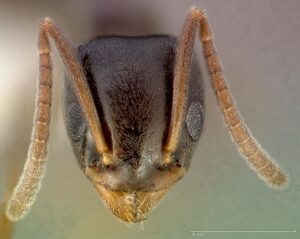 |
Credit: Photographer and AntWeb.org
- Medium size ant, workers are 1.5-3.0 mm long.
- Brownish-grey and shiny.
- Petiole with one node, somewhat hidden beneath the first abdominal segment
- From above, abdomen appears wider than thorax.
- Tip of the abdomen lacks distinct circle of hairs (unlike black carpenter ant).
- Soft-bodied.
Life Cycle and Common Characteristics
- The queen lays the eggs which incubate between 11–26 days.
- After hatching, the larval stage lasts between 13–29 days, and the pre-pupal and pupal stages last between 10–24 days.
- The queen may live at least 8 months, workers at least a few months, while males live only about one week
- These ants form colonies of 3,000 to 4,000 individuals.
- They form polydomous colonies (with several egg laying queens, and one colony has multiple nests).
- They nest indoors or outdoors. Outdoors the nests are shallow and often located under rocks logs, boards, or exposed soil. Indoors, colonies are found near heat sources or in insulation, and can live in walls, under floors, house plants, in the lids of toilets, or in similar cavities.
Damages and Economic & Medical Implications
- The odorous house ant is a common indoor pest.
- This species feeds primarily on sweets, including honeydew. It often invades homes and other structures during cool weather or following heavy rain, when honeydew supplies diminish outdoors.
- It is a scavenger / predator ant. It eats most household foods, especially those that contain sugar, as well as other insects
- They release a foul odor when crushed, which lead to their nickname “stink ant”.

